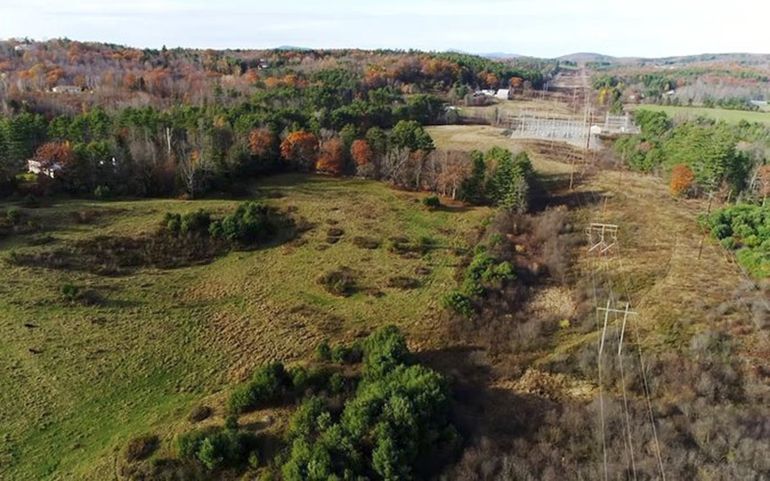EPA says CMP permit application with Army Corps of Engineers is ‘incomplete’
 Photo / New England Clean Energy Connect
Central Maine Power's proposed $950 million transmission project in western Maine, which received a "certificate of public convenience and necessity” from the Maine Public Utilities Commission on April 11, has hit a speed bump. In a strongly worded letter to the Army Corps of Engineers' New England office, the federal Environmental Protection Agency says CMP's permit application with the Army Corps is "incomplete" and needs a “detailed analysis” of alternatives.
Photo / New England Clean Energy Connect
Central Maine Power's proposed $950 million transmission project in western Maine, which received a "certificate of public convenience and necessity” from the Maine Public Utilities Commission on April 11, has hit a speed bump. In a strongly worded letter to the Army Corps of Engineers' New England office, the federal Environmental Protection Agency says CMP's permit application with the Army Corps is "incomplete" and needs a “detailed analysis” of alternatives.
The federal Environmental Protection Agency says Central Maine Power’s permit application now being reviewed by the U.S. Army Corps of Engineers for its controversial New England Clean Energy Connect transmission line project is incomplete and needs a “detailed analysis” of alternatives.
In an April 25 letter to the U.S. Army Corps of Engineers’ New England office, Beth Alafat, acting chief of EPA’s Wetlands Protection Unit, told the U.S. Army Corps of Engineers CMP’s incomplete application prevented the public from having a full understanding of the $950 million 145-mile transmission project during the Army Corps’ public comment period, which ended on April 25.
“One way to address the deficiency of important project information available during the comment period would be for the [Army Corps] to issue a revised public notice for the project,” Alafat wrote.
Impact on wetlands
Other points made by Alafat in her strongly worded nine-page letter to the Army Corps’ New England office addressed:
“As proposed, the project would cause direct and secondary impacts to many wetlands, streams and vernal pools … The transmission line would clear 1,800 acres of land and cross more than 200 rivers, streams and brooks, removing over 11 linear miles of riparian vegetation adjacent to these aquatic resources. The project would impact hundreds of acres of wetlands, including 242 vernal pools, mostly through secondary impacts.”
Alafat’s conclusion: “Given the substantial aquatic impacts … it is especially important to conduct a complete alternatives analysis with the goal of avoiding and minimizing project impacts, fully considering alternative border crossing locations, alternative transmission line routes and alternative to aerial installation. The analysis must consider alternatives and design measures to avoid, and where unavoidable, minimize impacts to aquatic resources.”
Alafat pointedly stated: “Alternatives to the proposed action that would cause less impact to the aquatic ecosystem have not been fully explored.”
She recommended that “specific routing alternatives be considered, including underground routing along existing local, state and/or federal roadway or railway corridors, or along other existing previously disturbed linear corridors, including logging roads, as well as underground routes along the proposed corridor on new alignment (with minimized vegetation clearing) between the Canadian border and the Forks, or other new alignment corridors.”
Alafat expressed the EPA’s willingness to “continue to work” with the Army Corps and CMP during the Army Corps’ review of the NECEC project, adding her sense that an “interagency meeting with the applicant in the near future would be helpful.”
NRCM’s reaction
The Natural Resources Council of Maine, one of the leading critics of CMP’s project, applauded the EPA letter and its recommendation that the Army Corps “start its permitting process over” and “focus more attention” on the project’s environmental impacts, the environmental organization stated in a news release.
“EPA’s letter confirms what we have been saying about the CMP transmission corridor for nearly two years,” said Nick Bennett, NRCM’s staff scientist. “The corridor would cause serious harm to Maine’s clean water, fisheries and wildlife. CMP failed to look at less-damaging alternatives, such as burying the corridor along Route 201, and its proposed compensation for the corridor’s environmental damage is woefully inadequate. … This permitting process needs to be slowed down, and all alternative routes and environmental impacts need a thorough analysis.”
The EPA letter comes at a critical time for CMP as it moves through the regulatory process, which includes getting permits from the Maine Department of Environmental Protection, the Maine Land Use Planning Commission, the Army Corps and others. It received a “certificate of public convenience and necessity” from the Maine Public Utilities Commission on April 11.













0 Comments